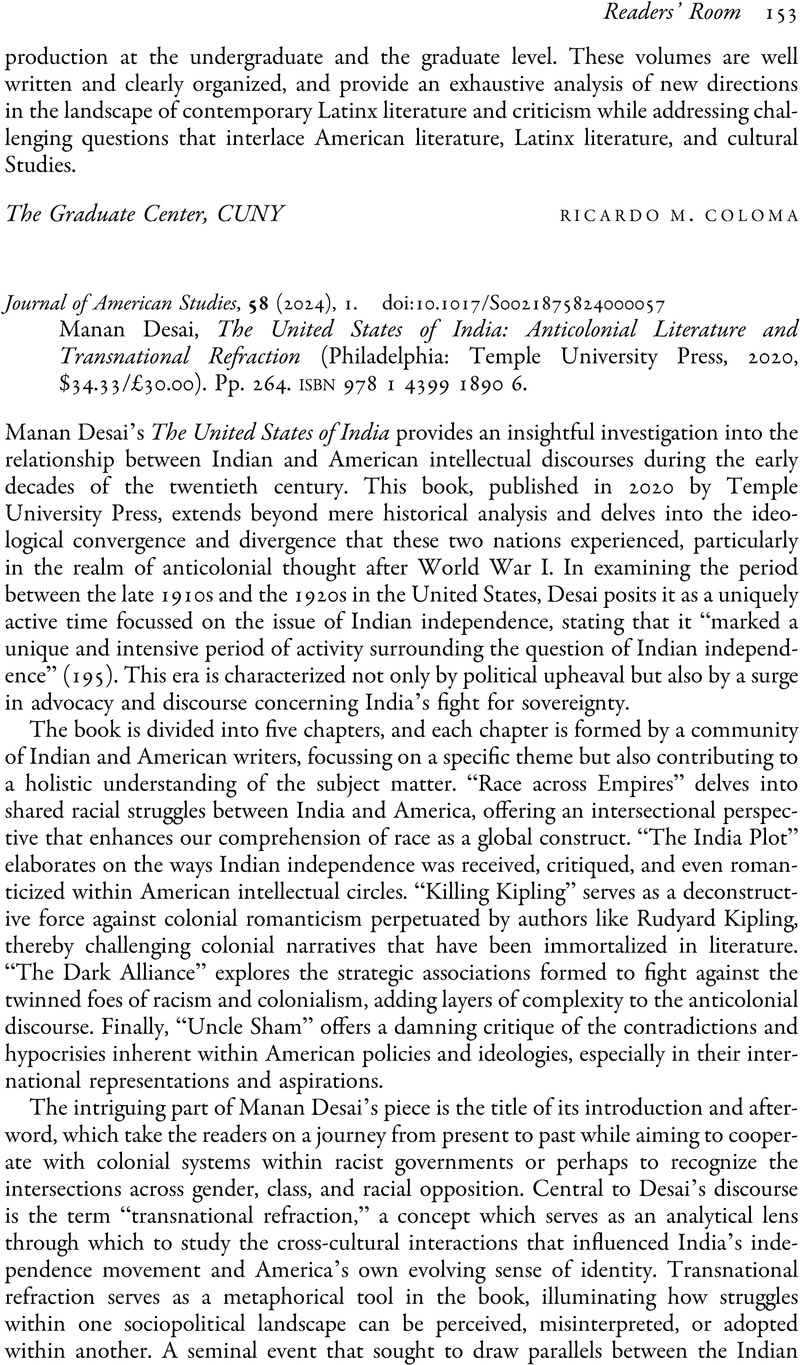No CrossRef data available.
Published online by Cambridge University Press: 07 May 2024

1 The term “double-consciousness” was first used by W. E. B. Du Bois in The Souls of Black Folk (1903). It refers to a source of internal “twoness” that was originally thought to be experienced by African Americans because of their racialized oppression and devaluation in a white-dominated society.